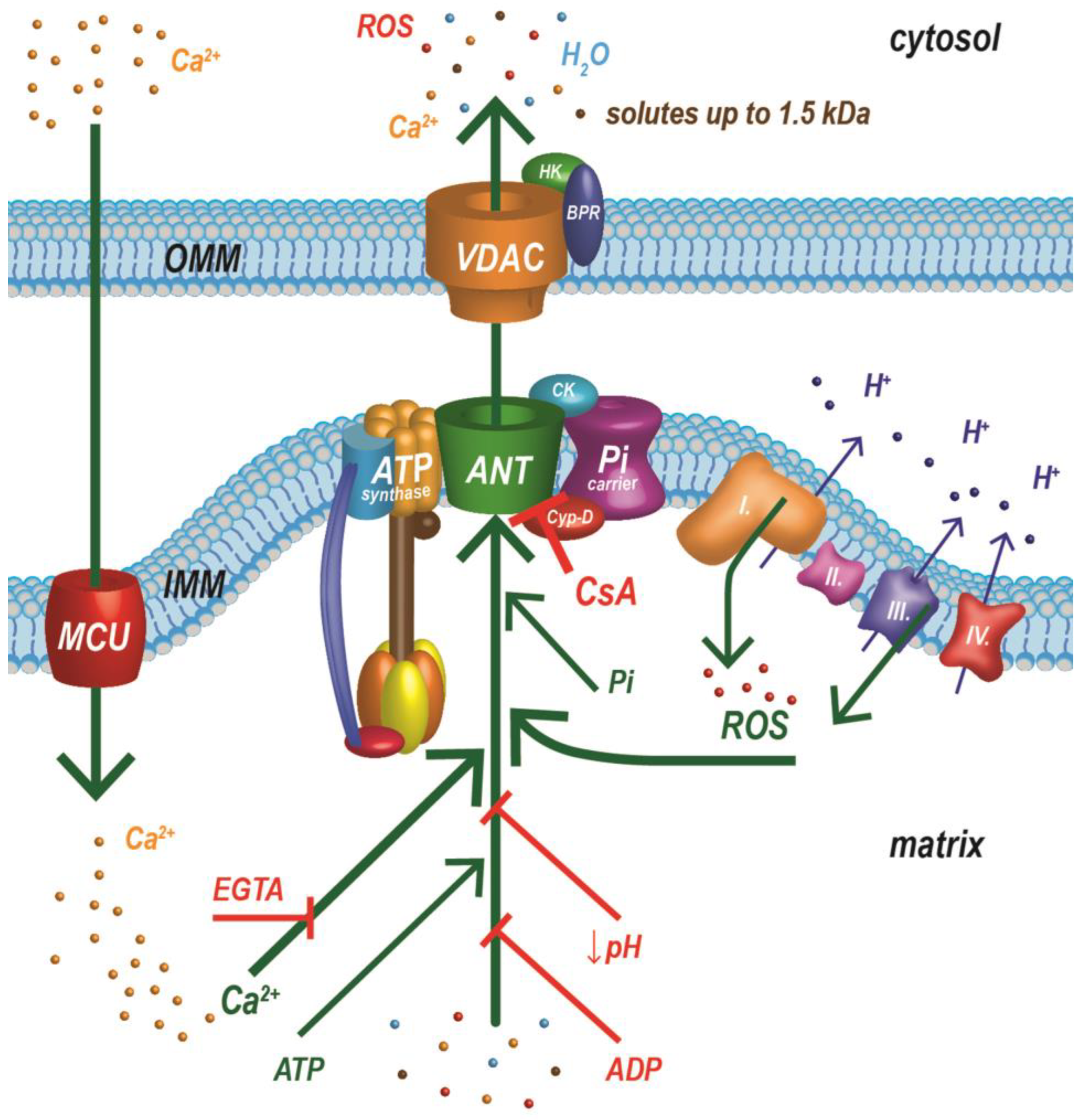Mitochondrial Permeability Transition Pore Analysis Service
- Investigating mitochondrial functional changes during apoptosis, necrosis, and autophagy.
- Validating mPTP opening status in ischemia-reperfusion and oxidative stress models.
- Identifying the mechanisms of action of small molecules that regulate mPTP.
- Assessing mitochondrial homeostasis disruption in genetic disease or tumor models.
Mitochondrial Permeability Transition Pore Analysis Service monitors the opening status of the mitochondrial permeability transition pore (mPTP) using high-sensitivity detection methods such as co-staining techniques combined mitochondrial membrane potential assays. This service reflects mitochondrial stress responses, dysfunction, or recovery status, and is applicable to basic research, drug screening, safety evaluation, and mechanistic studies.
The Mitochondrial Permeability Transition Pore (mPTP) is a non-specific channel spanning the inner and outer mitochondrial membranes, playing a critical role in regulating cell survival and initiating cell death. Under normal conditions, mPTP toggles between open and closed states. However, in response to stressors such as calcium overload, oxidative stress, or energy imbalance, the pore may abnormally remain open for extended periods. This persistent opening increases mitochondrial membrane permeability, allows free diffusion of small molecules, leads to membrane potential collapse, and ultimately triggers apoptosis or necrosis. Aberrant mPTP opening is closely associated with various diseases, including ischemia-reperfusion injury, neurodegenerative disorders, and tumor metabolic reprogramming. Analyzing the mPTP opening state provides valuable insights into mitochondrial homeostasis, cell fate determination, and therapeutic compound evaluation.

Endlicher R. et al. Cells. 2023.
Leveraging a well-established mitochondrial function analysis platform and advanced techniques such as fluorescence imaging and flow cytometry, MtoZ Biolabs offers Mitochondrial Permeability Transition Pore Analysis Service to evaluate the opening status and dynamic changes of mPTP. This service helps uncover molecular mechanisms involved in mitochondrial stress, apoptosis, or necrosis, and supports drug toxicity screening, pathological research, and mechanistic studies and target validation related to mitochondrial-associated diseases.
Service Advantages
1. Advanced Analysis Platform: MtoZ Biolabs established an advanced Mitochondrial Permeability Transition Pore Analysis Service platform, guaranteeing reliable, fast, and highly accurate analysis service.
2. One-Time-Charge: Our pricing is transparent, no hidden fees or additional costs.
3. Customized Service: Tailored Mitochondrial Permeability Transition Pore Analysis can be provided based on the specific requirements of your project.
Sample Submission Suggestions
Specific sample submission requirements may vary depending on the project. We recommend contacting our technical support team prior to submission for detailed and project-specific sample preparation guidance.
Applications
Application examples of Mitochondrial Permeability Transition Pore Analysis Service:
FAQ
Q1. What Factors can Affect the Reliability of mPTP Detection Results?
A1: mPTP detection results can be influenced by several factors, including the cellular state (e.g., stage of apoptosis), the concentration and duration of inducers, sample preparation quality (such as mitochondrial isolation purity), and the stability of fluorescent dyes as well as imaging parameter settings. To ensure reliable results, we recommend standardizing induction conditions, including both positive and negative control groups in parallel, and having the procedure and data analysis performed by an experienced technical team.
Q2. How Can Transient mPTP Opening be Distinguished from Sustained Opening?
A2: Transient mPTP opening is typically a reversible mitochondrial response to physiological stimuli and does not lead to cell death, whereas sustained opening results in mitochondrial membrane potential loss, cytochrome c release, and the initiation of apoptosis or necrosis. In experiments, transient opening is often observed as low-level fluorescence fluctuations, while sustained opening is characterized by complete membrane potential collapse or mitochondrial swelling.
Deliverables
1. Comprehensive Experimental Details
2. Materials, Instruments, and Methods
3. Raw Experimental Images or Data Files
4. Analysis Results of mPTP Opening Rate
5. Customized Report
Related Services
Mitochondrial ROS Analysis Service
Mitochondrial Membrane Potential Analysis Service
Mitochondrial Respiratory Chain Enzyme Analysis Service
How to order?







